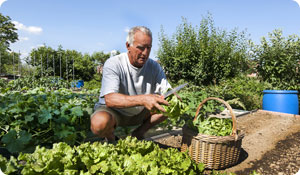
Is there danger lurking in your yard? There might be if you're growing one of these five common poisonous plants.
1. Oleander
This flowering red, pink, or white evergreen shrub is grown in warm areas all over the U.S. It's often found in yards and gardens and is so draught tolerant and hearty, California even uses it to landscape highways and freeways.
Why it's dangerous: Every part of this plant is poisonous including the flowers, leaves, stems, pollen, and nectar. Even honey made from this plant is toxic. If consumed, it can be lethal. If it comes in contact with the skin or eyes it can cause intense burning and inflammation. If it's burned and the smoke is inhaled, it can cause severe respiratory distress.
2. Wisteria
This flowering vine covers porticos, porches, and arches all over the U.S. especially in the South and Southwest. With lush thick leaves and rich flowers that fall in clusters of white and purple, these natural shade producers can live for generations.
Why it's dangerous: Every part of the plant is considered poisonous though the flowers are less poisonous than the leaves and branches. If ingested, it can cause severe nausea, vomiting, diarrhea, and cramps.
3. Foxglove
This tall, brightly-colored perennial flower grows a stalk that's about three feet high with many large blooms of purple, deep red, pink, and white (just the right size for a fox to slip its paw into).
Why it's dangerous: The leaves from this plant are used to make the heart drug, Digitalis, as the plant is also called. If any part of the plant is consumed, it can cause heart palpitations, racing, or slowing, plus nausea, vomiting, diarrhea, and cramps. If enough of the flower's poison is consumed, it can cause cardiac arrest.
4. Hydrangea
Another garden favorite, pink, blue, lavender, green, or white hydrangea blossoms are big, puffy, and attractive.
Why it's dangerous: They're extremely poisonous and if consumed will result in stomach pain, itchy skin, vomiting, weakness, and sweating. Coma, convulsions, and cardiac problems have also been reported.
5. Belladonna
Also known as Deadly Nightshade, its Italian name translates to "beautiful woman" because it was used to dilate the pupils of women to given them a wide-eyed expression.
Why it's dangerous: Its berries are particularly attractive to children and animals because they look like blueberries, but if consumed, they can cause fever, accelerated heartbeat, inability to urinate or sweat, hallucinations, convulsions, and coma.
If your family includes young children and you have any of these plants in your yard, your safest action plan is to have these plants removed by a professional. If uprooting your garden isn't practical, then educate youngsters not to touch or taste any plants at all without first asking permission. If they do try a bite, call your local poison control hotline, 911 and/or your doctor for immediate advice and medical attention.
Liesa Harte, MD, reviewed this article.
Sources:
Robin Lloyd. Ten Most Common Poisonous Plants. LiveScience.com. May 17, 2007.
http://www.livescience.com/11356-top-10-poisonous-plants.html
NIOSH Fast Facts: Protecting Yourself from Poisonous Plants. Centers for Disease Control.
http://www.cdc.gov/niosh/docs/2010-118/





